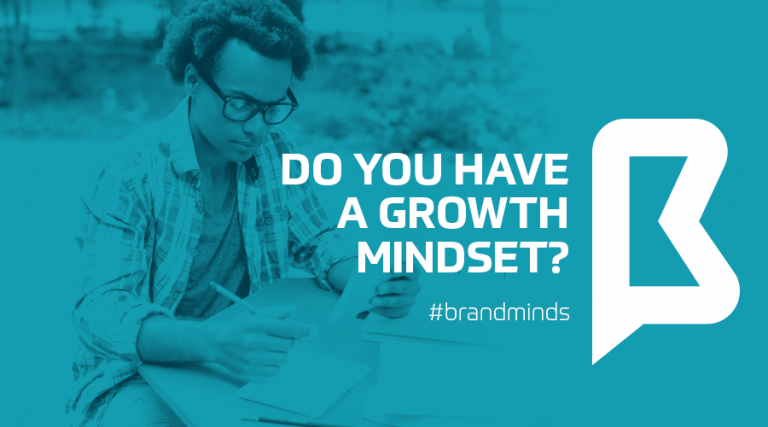Pros and Cons: Fiedler’s Contingency Model of Leadership (with examples)
Fiedler’s Contingency Model of Leadership evaluates the effectiveness of a leader in an organization.
According to this model, a leader’s effectiveness is based on the situation. The framework argues that there is no one best style of leadership and the organization should match a particular leadership style to a particular situation.
How should you apply Fiedler’s Contingency Model of Leadership to your organization?
To answer this question, I have prepared three examples.
Fiedler’s Contingency Model of Leadership example #1 – Advertising Agency Manager

Let’s imagine you are the founder of a major advertising agency. The agency manages a portfolio of several global clients and has won a number of advertising awards. But things have not been going well for the past three years and the company is going through a restructuring and realignment process.
You are looking to replace the current CEO with a new leader. Who would be the right person for the job? What type of leader should be more suited to lead the team at this particular time?
Before you begin looking for a person to hire, analyze the situation according to one of the factors underlining Fiedler’s contingency model: situational favorableness.
Situational favorableness or situational control describes the leader’s ability to control the group situation. More specifically, the degree to which the leader can influence the behaviour of group members in order to face the current situation.
There are three factors that determine the favourableness of a situation: Leader-Member Relations, Task Structure and Leader Position Power.
Leader-Member Relations refers to the degree of mutual trust, respect and confidence between the leader and the subordinates.
Leader Position Power refers to the amount of power the leader has over the group, i.e. to which extent the leader can reward or punish the group’s members.
Task Structure refers to the extent to which group tasks are clear and structured.
Since you are looking to bring a new person to lead the team, this person is at a disadvantage: the team doesn’t know him/her, and trust, respect and confidence are earned.
So the new leader has poor leader-member relations but has a strong position power since he controls resources and can reward or reprimand the team’s members.
Working in an advertising agency requires a high level of creativity therefore the team’s members perform tasks that are not structured. So the agency environment has a low task structure.
According to Fiedler’s Contingency Model of Leadership, the most effective leader in this particular situation is high-LPC or relationship-oriented. This type of leader will focus on building relationships with the team members first.
When the relationship between the leader and team members is based on confidence and trust, everyone’s work is easier. Find what is a high-LPC leader.
Fiedler’s Contingency Model of Leadership example #2 – Sportswear Shop Manager

Let’s assume you are the owner of a sportswear brick-and-mortar shop. Business is picking up and you are planning to expand to three new locations. So you need a manager for your main shop. You are looking to hire externally. He or she will lead a team of five employees. Every team member knows what they need to do to run the shop. Given the situation, the person you will hire will have strong position power, poor leader-member relations in a structured task environment.
According to Fiedler’s Contingency Model of Leadership, the leader most likely to succeed in influencing the team is high-LPC. Even in situations where tasks are structured, the leader still needs to build a good relationship with team members.
Fiedler’s Contingency Model of Leadership example #3 – App Development Team Leader

You are the CEO of a large software corporation. Over the last five years, the company has added a new service to its portfolio: application development. The offering has proved highly successful with the number of clients rising constantly every year. The application development department is comprised of four small teams lead by a team leader. One of the leaders has left the corporation and the position is vacant. Because team members have built tight relationships with one another, you have decided against hiring externally. Instead, you will promote one of the team’s members to team leader.
In this particular situation, what type of leader should be the most effective?
Because the person you promote is coming from within the team, he or she will have good leader-member relations, but a weak position power since they don’t control the resources. Also, the environment is highly technical so the tasks are structured.
According to Fiedler’s Contingency Model of Leadership, the most effective leader is low-LPC or task-oriented. The promoted person already has the support of his team members, so to be a successful leader, he or she needs to be task-oriented.
Pros and Cons of Fiedler’s Contingency Model of Leadership
The premise of Fiedler’s Contingency Model of Leadership is that a person’s leadership style is determined by the person’s life experiences and cannot be changed. That was the main approach to leadership in the sixties. Things have changed since then.
Extensive research conducted in the following decades showed that people, though influenced by previous experiences, are not defined or limited by them.
People can move past their previous experiences. Leaders can adapt their leadership style to different situations. They can shift between styles (and there are 12 of them!) to better suit the situation at hand.
In his 1995 bestseller Emotional Intelligence, renowned behaviour scientist and psychologist Daniel Goleman shows that leaders with high emotional intelligence create more connected and motivated teams who are become more invested in the success of the company.
In 2006, when Mindset: The New Psychology of Success was first published, the fixed mindset myth of You either have it or you don’t was busted. According to the author, researcher and psychologist Carol Dweck, having a growth mindset leads to a better and more successful life.
People’s set of skills and abilities can change and grow. Task-oriented leaders can learn to grow and nurture relationships.
Another criticism of Fiedler’s Contingency Model of Leadership is that it fosters a high rate of top executives turnover. The model suggests that whenever the situation requires, the current leader is simply replaced with a more suitable leader. In this respect, the model is a limiting lens through which one can assess a person’s abilities.
Fiedler’s Contingency Model of Leadership is one of the first models which measures the effectiveness of a group’s performance based on the leadership style of their leader.
The model also promotes the idea of analyzing a situation according to three relevant factors: leader-member relations, task structure and leader position power. And then simply match the most adequate leader to the situation.
Another advantage of this model is that it provides a tool for self-assessment. The Least-Preferred Co-Worker (LPC) Scale is a questionnaire that helps the leader to understand their specific leadership style: task-oriented or relationship-oriented. The leader looking to grow their leadership skills can use the LPC scale as a starting point.
Join the Conversation
We’d love to hear what you have to say.
Get in touch with us on our LinkedIn Page, Facebook Page, Twitter or TikTok.
Do you have a growth mindset?
It’s a warm summer evening and John is walking home. He walks slowly, one hand in the pocket and the other holding his briefcase tight. People rush by, but he doesn’t look at them. He’s in his late forties, but he’s in good physical shape. All he’s thinking of is the office meeting he attended four hours earlier. Things are not going well for him. He’s a salesman, he was successful ten years ago, but now he feels outdated and out of skills. His younger colleagues are so in tune with the new technologies, expertly juggling multiple social media accounts, optimisation apps and lead generation funnels. And they close so many deals! Selling is not what it used to be. What worked ten years ago doesn’t work now. Well, that’s it for me, I can’t do what the Millennials do!

If John’s story is familiar to you, keep reading!
Growth mindset vs fixed mindset
[bctt tweet=”The fixed mindset myth – You either have it or you don’t #growthmindset ” username=”brand_minds”]
People with a fixed mindset believe that intelligence and abilities are fixed entities. They believe they have a certain amount of intelligence and there’s nothing you can do about it. The world keeps changing, permanently evolving; these people note that the abilities which had helped them achieve success in past years are now outdated. The people with a fixed mindset think they can’t do anything to improve and they can’t change. They blame their lack of success on the world and are prone to depression.
[bctt tweet=”The Growth mindset benefit – Exercise your mind #growthmindset” username=”brand_minds”]
People with the growth mindset believe intelligence and abilities are malleable. Their set of skills and abilities can change and grow through dedicated activities: practice, improving through failures, working through setbacks. They believe they can transition into new roles and can build and develop new abilities. The mind is a muscle and must be exercised constantly in various and different ways to keep it in great shape.
Carol S. Dweck’s expandable theory of intelligence

Carol S. Dweck
image source: timeshighereducation.com
Carol S. Dweck is a researcher and psychologist, Professor of Psychology at Stanford University. Her research has focused on why people succeed and how to foster success. She is the author of Mindset: The New Psychology of Success.

image source: goodreads.com
In her book, she shows how success in school, work, sports, the arts, and almost every area of human endeavor can be dramatically influenced by how we think about our talents and abilities. Fixed-mindset individuals dread failure because it is a negative statement on their basic abilities. Growth mindset individuals don’t mind or fear failure as much because they realize their performance can be improved and learning comes from failure.
The fixed mindset creates an internal monologue that is focused on judging: This means I’m a loser or This means I’m a better person than they are.
The internal monologue of people with a growth mindset is not about judging themselves and others. They look for opportunities to learn and grow through constructive action. They tell to themselves: What can I learn from this? How can I improve?
What does Fixed vs. Growth mindset mean for companies?
Her research found that the fixed and growth mindset influences companies as follows:
- People with the fixed mindset do not admit and correct their deficiencies; a company that cannot self-correct cannot survive;
- When bosses become controlling and abusive, they put everyone into a fixed mindset. This means that instead of learning, growing, and moving the company forward, everyone starts worrying about being judged. It starts with the bosses’ worry about being judged, but it winds up being everybody’s fear about being judged. It’s hard for courage and innovation to survive a company-wide fixed mindset;
- Negotiators with a growth mindset were much more able to push past obstacles and reach an agreement that benefited both sides;
- Managers with a growth mindset notice improvement in their employees, whereas those with a fixed mindset do not (because they are stuck in their initial impression);
- Employees evaluated their growth-mindset managers as providing better coaching for employee development;
- Managers with a growth mindset actually sought more negative feedback from their subordinates. They wanted to learn how to improve their management techniques and were not threatened by the idea of hearing some negative things about themselves.
4 steps to change your mindset
Find extensive information on how to change your mindset on mindsetonline.com.
Step1. Learn to hear your fixed mindset “voice.”
“Are you sure you can do it? Maybe you don’t have the talent.”
“What if you fail—you’ll be a failure”
“People will laugh at you for thinking you had talent.”
Step 2. Recognize that you have a choice.
How you interpret challenges, setbacks, and criticism is your choice. You can interpret them in a fixed mindset as signs that your fixed talents or abilities are lacking. Or you can interpret them in a growth mindset as signs that you need to ramp up your strategies and effort, stretch yourself, and expand your abilities. It’s up to you.
Step 3. Talk back to it with a growth mindset voice.
THE FIXED-MINDSET says “Are you sure you can do it? Maybe you don’t have the talent.”
THE GROWTH-MINDSET answers, “I’m not sure I can do it now, but I think I can learn to with time and effort.”
FIXED MINDSET: “What if you fail—you’ll be a failure”
GROWTH MINDSET: “Most successful people had failures along the way.”
Step 4. Take the growth mindset action.
Over time, which voice you allow yourself to hear becomes pretty much your choice.
Conclusions
- Mindset change has enabled people to pursue their goals more effectively;
- Leaders are made, not born and made more by themselves than by any external means;
- Everyone, of whatever age and circumstance, is capable of self-transformation;
- When people are taught a growth mindset, they start to be sensitive to improvement;
- A company which employs fixed mindset people cannot survive and be innovative;
- Managers with a growth mindset inspire their employees to seek constant improvement and developing of skills;
- Employers with a growth mindset drive innovation and support the company’s struggle to overcome industry changes.

